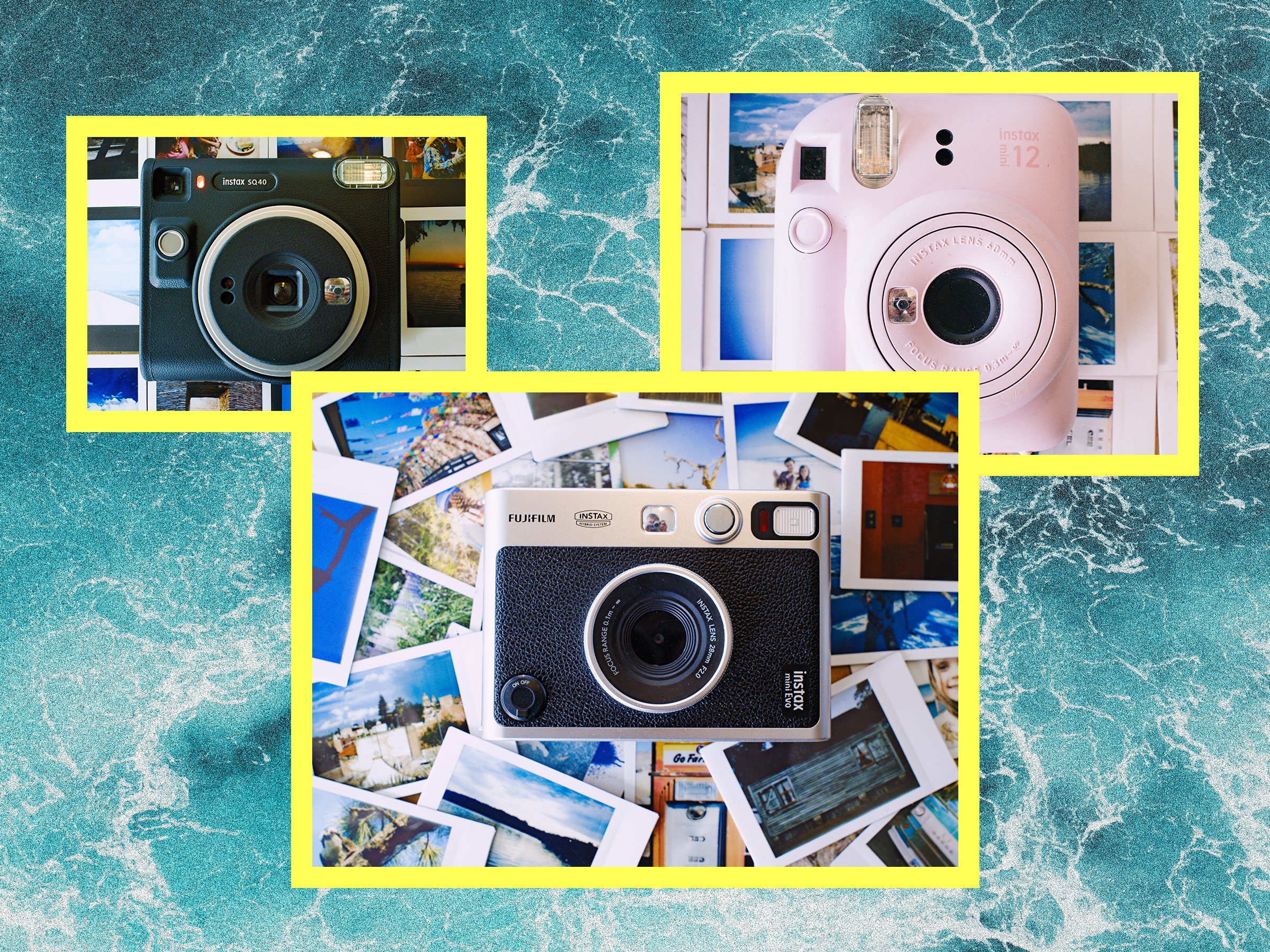The Lenovo Legion 9i feels like an apex gaming laptop. It’s brutally fast, is achingly cool, and has a feature set primed to take your gaming experience to the next level. It even features a built-in liquid cooler, a first of its kind for a gaming laptop. Lenovo pulled out all the stops for this one, and after spending the last few weeks with it, it’s clearly one of the standout laptops of the entire year – if you can afford its starting price of $3,181.
Lenovo Legion 9i (2023) – Design and Features
The Legion 9i is full of surprises. Taking it out of the box for the first time, I let out an audible “wow.” Its magnesium frame features a carbon flake lid that’s unlike anything I’ve seen before. It catches and reflects light in a way that is at once subdued and stunning, perfectly balancing sleekness with uniqueness. The finish also wards off fingerprints, so you can handle it all day without fear of unsightly smudges.
When you turn it on, any sense of minimalism goes out the window but it still manages to stun. It’s an RGB showcase, broadcasting to the world that it’s not just a gaming laptop, it’s a nice gaming laptop. A bright RGB ring encircles the front and back, projecting flowing light down onto your desk. The keyboard is backlit with exceptionally bright per-key illumination. Topping things off is a well-diffused Legion logo stamped vertically on the lid. Despite being so showy, it manages to not look garish or overdone. Of course, if you don’t like RGB, you can simply turn it all off, and I would actually recommend doing so to save on battery life.

Internally, the Legion 9i has specs to match its premium aesthetics. It features a blisteringly fast combination of an Intel Core i9-13980HX and an Nvidia RTX 4090 GPU, with an RTX 4080 option available for $520 less. The processor is an absolute powerhouse, offering 24 cores and 32 threads broken between eight performance cores and 16 efficiency cores for all of your content creation needs, and boosts up to 5.6GHz to maximize frame rates. There’s little you cannot do with this processor – it’s just that capable.
The graphics card handles the heavy lifting for gaming and video editing. The RTX 4090 in the unit we were sent is the cream of the crop for mobile GPUs at the moment and features 16GB of high-speed GRRD6X video memory for smooth, high-resolution gameplay. It runs at full wattage, too, which isn’t the case on every RTX 4090 laptop, so no performance is left on the table.
Supporting these chips is 32GB to 64GB of DDR5 memory. By default, these run at 5,600 MHz but for another $100, you can upgrade to 6,400MHz memory and earn an extra few fps in most games. The system I tested features 32GB of standard 5,600MHz memory. You’re also able to choose from 1TB to 2TB of NVMe SSD storage to store all of your games with minimal load times.

Keeping all of this cool is the most unique thermal solution I’ve encountered in a laptop. Most of the time, it uses traditional air cooling with multiple heatpipes drawing heat away from the processor and graphics card and expelling it out the side. It works well in large part thanks to a massive 13.4 x 2.2-inch air intake grid above the keyboard. It looks like a speaker grille at first, but in fact, it’s an array of thousands of holes designed to draw in cool air exactly where it’s needed.
When the GPU reaches 84 degrees Celsius, the liquid cooler turns on and goes to work. At this point, the fans are already loud, so you really can’t hear it go into action. It’s an innovative solution never before seen in gaming laptops. Before the Legion 9i, liquid cooling always required an external box. Here, it’s all integrated and doesn’t even make the laptop much heavier. It only applies to the GPU, but it works well to keep the system running at peak performance for extended periods with the power sliders set to max settings.
The display is absolutely gorgeous. Running at a native 3200 x 1600 (3.2K) resolution, it uses MiniLED technology to deliver outstanding brightness and color reproduction. It’s VESA certified for HDR1000 with 1,200 nits of peak brightness. The colors are vibrant and have excellent color coverage with 100% coverage for both AdobeRGB and DCI-P3 color spaces. With these specs, it’s able to offer full HDR support, including for Dolby Vision, and looks fantastic. It also runs at 165Hz and supports Nvidia G-SYNC for buttery smooth gameplay.
At 5.6 pounds, it’s not the lightest laptop but it’s also not exceptionally heavy for its 16-inch size either. Measuring 14.08 x 10.93 x 0.74 inches, it easily slides into a bag. The 99.9Whr battery is enough for most of a work day with the 4090 turned off, but I would still recommend carrying a charger if you plan to do some lunchtime gaming. Lenovo includes two adapters in the bag (another first), one a 330-watt power brick and the other a 140-watt USB Type-C charger. It’s a nice addition, especially since the full-size charger adds another couple of pounds to its total carry weight and pushes it over the edge for easy portability.

One of the reasons to buy a gaming laptop is its plentiful connectivity options, and the Legion 9i doesn’t disappoint. There are two USB Type-A 3.2 ports, one on the right, and one on the back. There’s a USB Type-C 3.2 on the right and a pair of Thunderbolt 4 ports along the back with support for DisplayPort 1.4 and power delivery up to 140 watts. There’s a MicroSD card reader and audio combo jack on the left side, as well as a full-size HDMI 2.1 and ethernet jacks along the back. For networking, it supports Wi-Fi 6E and Bluetooth 5.1.

The keyboard is excellent. It offers a deep 1.5mm of travel with excellent tactility, which makes typing feel especially accurate. Lenovo has managed to squeeze in a numpad, giving you access to a full assortment of keys. This does force all of the buttons to be a little smaller but I didn’t find it to be any more difficult to use than a normal laptop keyboard. There’s the usual assortment of secondary functions along the F-row to control brightness, media, and microphone controls. With a combination, you can swap between six profiles of customizable lighting. The keys are tactile and satisfying and don’t feel mushy at all. Under full load, they never get uncomfortably warm. It’s a very well-done keyboard, but it’s sadly not programmable outside of its per-key backlighting.
The touchpad is another matter and is just not very good. Making room for the big air intake grid shifted the keyboard down and demanded a much smaller touchpad than is usually found on laptops of this caliber. It feels fine under the finger, but it’s also shifted slightly to the left, so it sometimes confused right and left clicks or didn’t register them at all. This isn’t an issue if you’re comfortable with touch commands, but there was clearly room to center it a bit more to the right and alleviate this issue during the design process.
For video conferencing, there’s a 1080p webcam that can record at 30fps. It works but is pretty unremarkable and delivers a soft image overall. For meetings, it will get the job done, but I wouldn’t record a facecam with it if I had another choice.
The speakers are great. The system uses a pair of two-watt drivers, tuned by Harman, and they’re full bodied and rich. Above 80%, they can begin to sound a bit shrill, but they’re perfectly fine to play games on and enjoy videos with. The system comes with the Nahimic app pre-installed and enabled, and it’s worth leaving on. While the Surround Sound effect adds quite a bit of reverb to the sound, the enhancements to bass and treble definitely elevate the listening experience.
Lenovo Legion 9i (2023) – Software
The Lenovo Legion 9i uses the pre-installed Lenovo Vantage application for most of its configuration options. The software is broken into panels with a large system monitor that displays your clock speeds, VRAM usage, and storage details. There are also helpful toggles for one-click overclocking, boosting network speeds, automatically closing apps, and more. There’s also a section dedicated to controlling the laptop’s lighting with a wide array of preset modes and customizable animations to choose from.
Like many other gaming laptops, the Legion 9i features a MUX switch that can toggle between the processor’s integrated GPU for the least power draw, the RTX 4090 for the best performance, or allowing the system to automatically switch depending on what you’re doing. Auto-switching is usually fine, but if you’re planning on plugging into a wall, turning on the RTX 4090 is the smart choice for consistently high performance.

Clicking into the Thermal Mode tab, things get interesting. This section of the software presents you with the choice of Balanced, Performance, or Quiet Modes. There’s also a Custom option that provides you a wider array of power options than I have encountered on any other gaming laptop. There are sliders for power and temperature limits for both the CPU and the GPU, GPU Dynamic Boost wattages, as well as the all-important TGP power setting that tells the computer how much power to feed the graphics card. These are advanced settings and should be tweaked with caution, but sliding the temperature and wattage limits to their max for the graphics card provides an instant boost to performance.

The system also comes with several other supporting apps. Tobii head- and eye-tracking can be enabled to add these controls in supported games (like Elite: Dangerous). It also allows you to enable privacy features that can lock the screen when you move away or make sure it stays awake as long as you’re sitting at your desk. Killer Intelligence Center gives you an overview of your network and allows you to balance and prioritize traffic. Nahimic controls the audio end of things and opens the door to virtual surround sound, custom EQs, and digital sound tracking. The latter is arguably cheating, allowing you to see the direction of sounds with on-screen radar, so should be used with caution in multiplayer games.
Apart from this, the only notable bit of bloatware is McAfee LiveSafe antivirus, which is as obnoxious as ever. It regularly forces pop-ups onto your desktop, which is never welcome, and actively harasses you to renew should it expire. It works as an antivirus, should you need one, but there are plenty of less-obtrusive options that won’t interrupt your game to try and sell you a subscription.
Lenovo Legion 9i (2023) – Performance
The Legion 9i offers a fantastic gaming experience. You should expect nothing less than class-leading performance from this laptop, especially if you opt to increase its power limits in the Custom performance setting. Even on the standard Performance mode, you can expect excellent performance, even at its higher 3.2K native resolution.

Let’s get the hard performance details out of the way first. The Legion’s resolution isn’t common, landing right in the middle between 1440p and 4K. We actually didn’t have another laptop with similar specs in our testing catalog that matched it, so in the chart above you can see where it lands against three other machines with similarly high-end specs.
In the synthetic tests, it landed on top in nearly every test. That’s the Core i9-13980HX at putting its performance and efficiency cores to work and a good example of the kind of performance you should expect from this laptop. It fell behind the Origin EON17-X in 3DMark Fire Strike and PCMark (if only by a hair), but the trade-off in real-world frame rates makes this worthwhile, in my opinion, as its 3.2K resolution looks stunning and is significantly easier to run.
For in-game tests, the 9i returned fantastic results. Every single game was playable at Ultra settings, including with ray tracing. DLSS is a major boon here, so we’d recommend enabling it. The RTX 4090 also lets you take advantage of frame generation, which can have a major impact on frame rates. Hitman 3 and Forza Horizon 5 approach or completely leverage the laptop’s 165Hz screen. Paired with G-Sync, it’s incredibly smooth and a treat for the eyes on this display.

Dropping the resolution to 1200p (the 16:10 equivalent of 1080p), the frame rates skyrocket. The Legion 9i also manages to pull ahead in the majority of benchmarks. In the handful of cases where it doesn’t, the difference is slight and within the margin of difference for its higher pixel count. If you care about maximizing responsiveness, dropping to 1080p is a viable option that still allows games to look great on its exceptionally vivid display.
The screen was easily the most stand-out feature of the laptop. The slight edge in frame rates is nice, but the richness in colors and outstanding dynamic range shape the experience like nothing else. This is a display you’ll want to enable HDR, both for gaming and for video content. It’s vivid, with outstanding contrast, and is responsive enough for even the most competitive first-person shooter.

It was also well-calibrated out of the box, so the adjustments from my colorimeter were very minor. Its excellent DCI-P3 coverage makes it a great fit for content creators who need to edit photos and videos, or students who need a laptop for graphic arts or game design. The processor and Nvidia GPU also pay dividends in creative apps like Adobe Premiere Pro that can leverage both for different aspects of the editing and rendering pipeline. Editing a 1080p clip was both responsive and fast to render.
The keyboard also deserves kudos. The 1.5mm of travel distance made it a much more satisfying keyboard to use than the majority of laptops – at least for someone like me who usually types on a full-height keyboard during the day. The touchpad was the complete opposite. I got used to it, but there wasn’t a day where I didn’t click the wrong side or miss a click entirely because of its positioning.

The bigger downsides are noise and battery life. Under load, it approaches jet engine status, and there’s not a lot you can do to minimize it without losing performance. On the plus side, the system works well. While gaming, the CPU hovered around 80 degrees while the GPU sat in the upper 70s in Performance mode. This means that the much-hyped liquid cooler rarely engages without dialing in higher power draw with a custom performance profile.
Which is exactly why you should set the GPU to its full wattage and experiment with the supporting power settings. The Legion 9i has performance headroom to spare and is one of the few gaming laptops where overclocking and power tweaks genuinely make sense. Thermal throttling is less of a concern here than most of the competition, which means you can pull even better performance from it with only a small amount of extra effort.
Battery life is expectedly middling for such demanding hardware. In our PCmark Battery test, the system was able to run for four hours and twelve minutes. With the GPU enabled and playing games, that dropped to just under a single hour. Needless to say, if you're actually gaming, you'll want to plug in, pronto.







